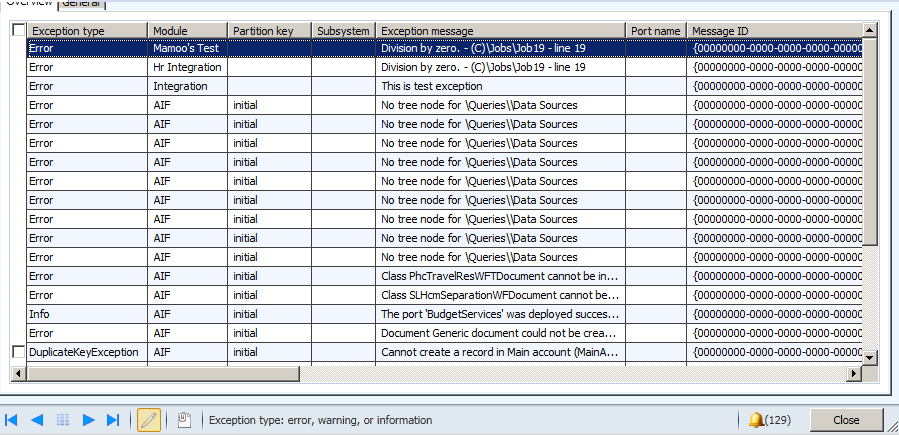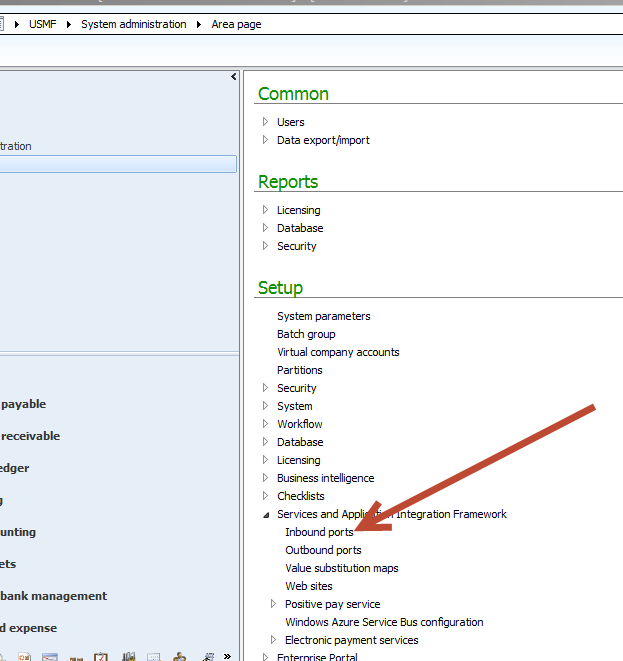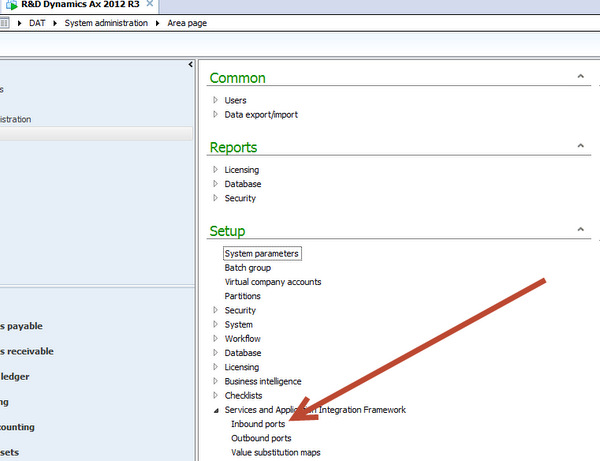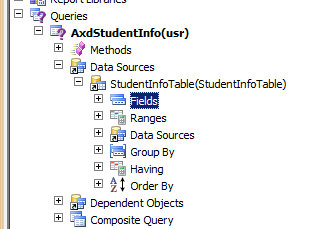When we are working with Document Aif services, any exception is logged in SysExceptionTable. You can excess these details from following link.
There is client requirement that all exception must be log in SysExceptiontable in custom service. I did this with the help of following code snippets which just log the division by Zero exception in SysExceptionTable.
static void Job19(Args _args)
{
InfologData infoData;
AifInfoLog aifInfoLog;
container infologData;
SysInfoLogEnumerator infoLogEnum;
SysInfologMessageStruct infoMessageStruct;
SysExceptiontable _Excep;
str ExceptionMessage;
int ab=0;
int test=10;
int result;
try
{
aifInfoLog = new AifInfoLog();
result = test / ab;
}
catch
{
infologData = aifInfoLog.getInfoLogData();
infoLogEnum = SysInfoLogEnumerator::newData(infologData);
while(infoLogEnum.moveNext())
{
//Extract the message from the string
infoMessageStruct = SysInfologMessageStruct::construct(infoLogEnum.currentMessage());
ExceptionMessage +=”\n” + infoMessageStruct.message();
}
_Excep.Exception =Exception::Error;
_Excep.Description = ExceptionMessage;
_Excep.Module =”Mamoo’s Test”;
_Excep.insert();
}
}




































